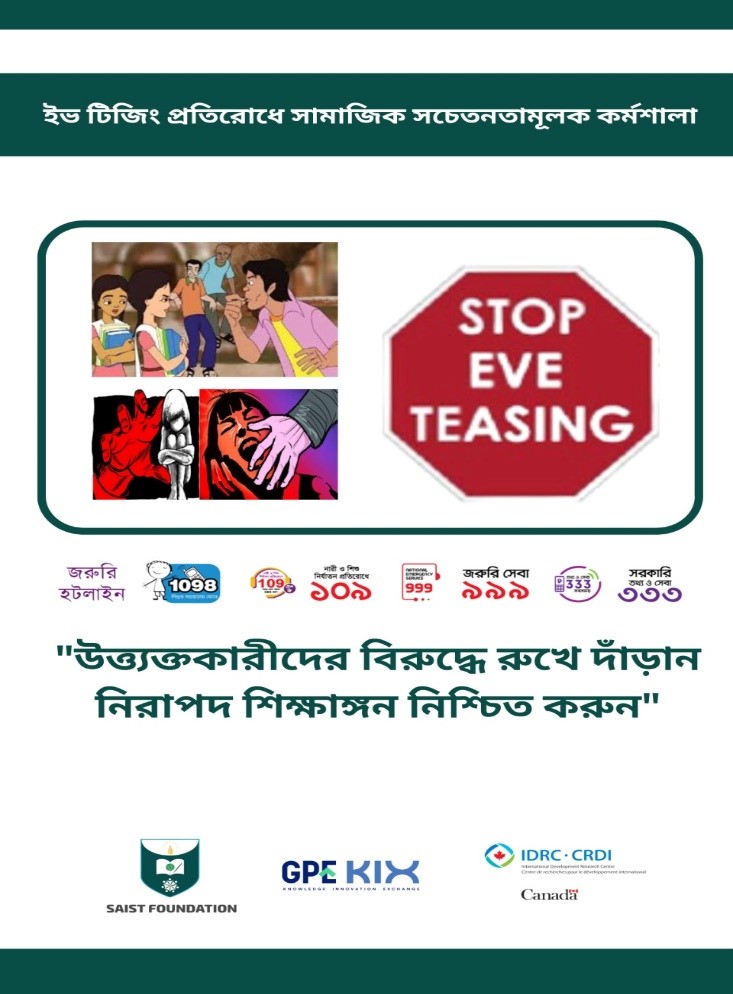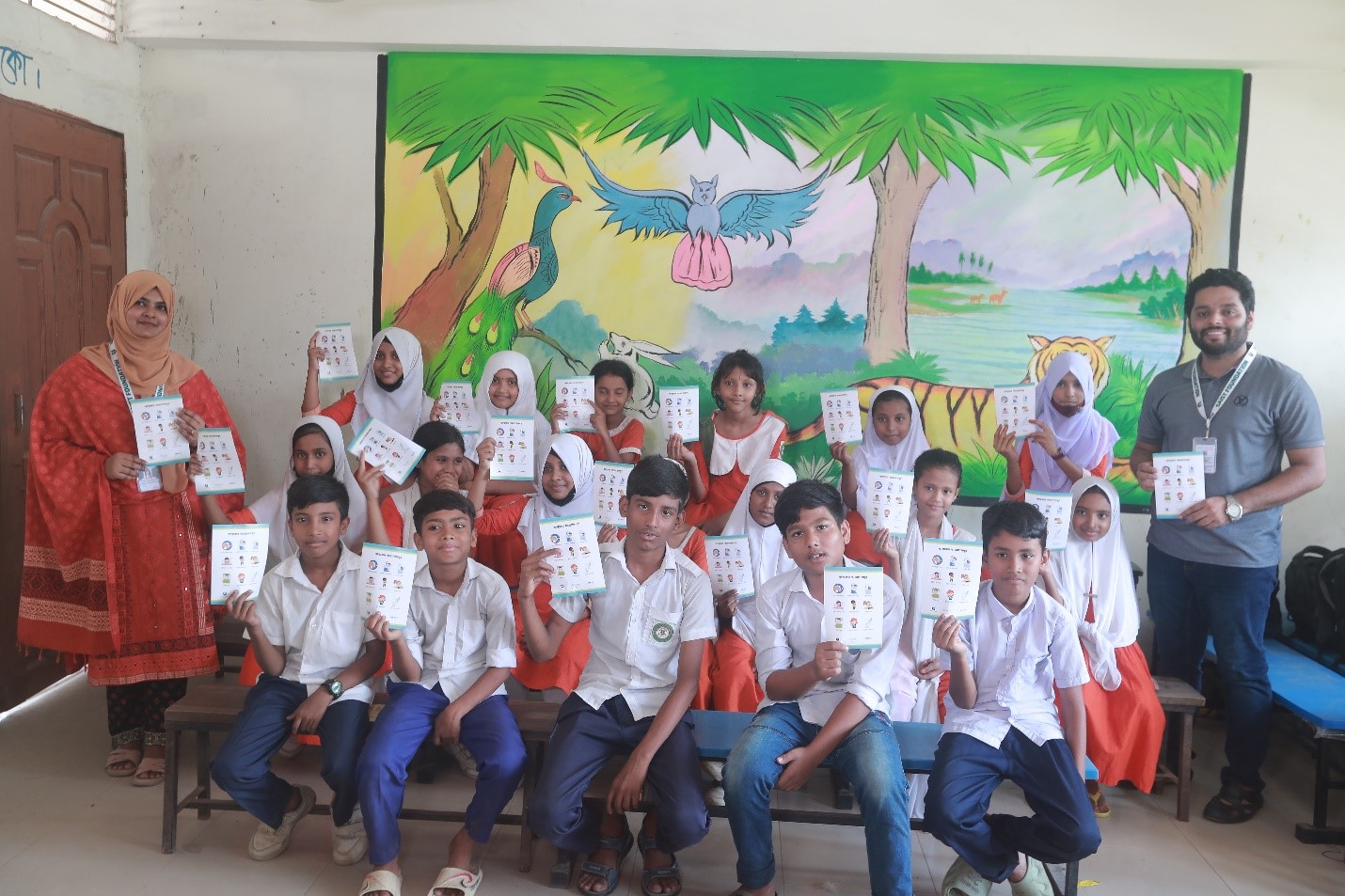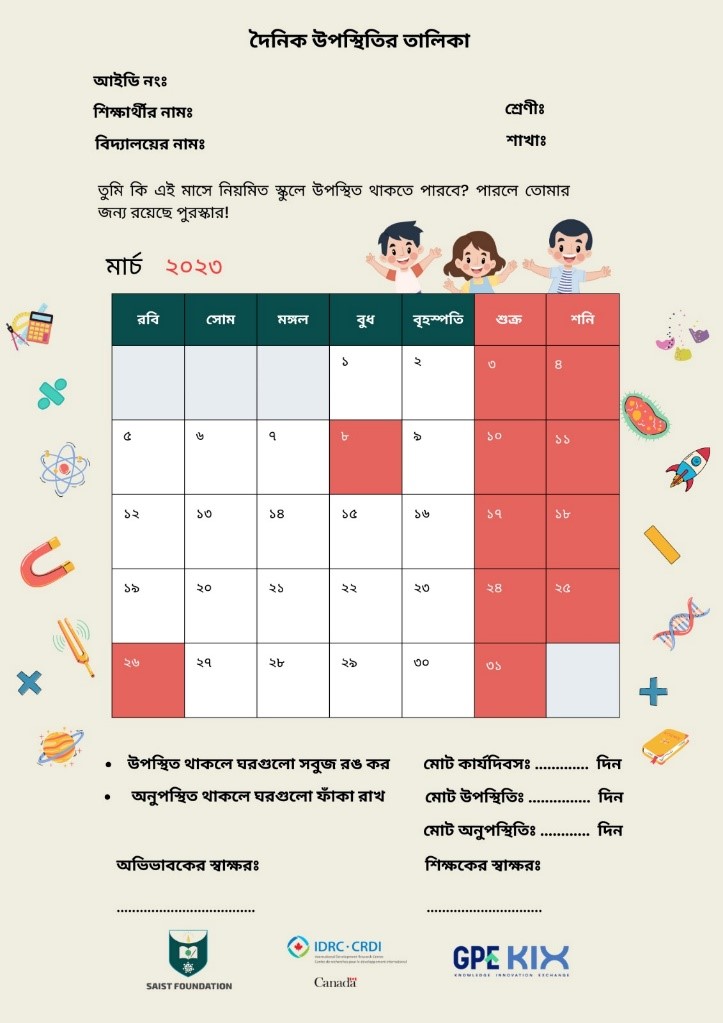Sexual harassment involves unwelcome advances, comments, or conduct of a sexual nature that creates a hostile or intimidating environment for the victim. In Bangladesh, this problem can happen in various settings, such as workplaces, educational institutions, public spaces, and even in online platforms. In 2021, a study by the Bangladesh National Women Lawyers' Association (BNWLA) revealed that approximately 87% of women have experienced sexual harassment in public transportation. Similarly, another study by ActionAid Bangladesh (2020) reported that 72% of female workers in the ready-made garment (RMG) industry have experienced sexual harassment in the workplace. Additionally, Bangladesh Bureau of Statistics (BBS) report in 2017 documented that 68% of students in higher education institutions have exposed to some form of sexual harassment.
Sexual harassment is a deeply concerning issue affecting individuals across the globe, and Bangladesh is no exception. The SAIST Foundation, a non-profit research organization in Bangladesh, has taken a proactive stance in addressing sexual harassment as part of preventing absenteeism among school students. SAIST survey, among around 500 secondary school students, found that 10% of students from the treatment group and 7% of students from the control group reported experiencing different forms of sexual harassment. This result suggests that sexual harassment is a significant problem in the secondary schools. Surprisingly, among the harassed group of students, 96% in the treatment group and 100% in the control group were female. Female students experienced harassment mostly (70%) on their way to school or when they returned from school to home. More than half of the students from the treatment group reported that they experienced harassment at least once or twice, while the rest experienced it quite often. Regarding the type of harassment, most of the students in the treatment group reported that they were followed from a close area (55.17%), people caste bad looks at them (34.48%), or passed bad comments on their dress or appearance (24.14%). 67.86% of the students in the treatment group sometimes talked to their parents about it, while one-third of them (32.14%) did nothing as it becomes a daily phenomenon. Among the harassed students in the treatment group, 17.50% reported that they thought of dropping school due to the incidents.
SAIST foundation conducted anti-harassment sessions for more than 200 students in the intervention schools to create awareness among students. . The initiative empowers students to become advocates against sexual harassment. It encourages them to report incidents, creating a culture where victims are heard and supported. SAIST has conducted the sessions as part of the study “Effectiveness and Scalability of Programs for Children Who Are Out of School and At Risk of Dropping Out in Bangladesh”, funded by the Global Partnership for Education’s (GPE) Knowledge and Innovation Exchange (KIX) and the International Development Research Centre (IDRC).
As sexual harassment is a grave issue in Bangladesh, impacting women and girls in various aspects of their lives and educational attainment, SAIST Foundation's "Speak Up" initiative is a commendable effort to combat sexual harassment by educating students and encouraging them to report incidents.
Bullying is a pervasive issue affecting the well-being and development of children and adolescents worldwide. In Bangladesh, it is a matter of serious concern, with adverse consequences for its victims. This write-up articulated the problem of bullying in Bangladesh highlighting the critical role of the SAIST Foundation in conducting anti-bullying sessions for school students to prevent absenteeism.
Bullying is characterized by repeated aggressive behavior with the intent to harm, intimidate, or establish dominance over another individual. In Bangladesh, bullying can manifest in various forms, including physical, verbal, relational, and, increasingly, cyberbullying. However, schools and online spaces are prominent settings where bullying occurs. To comprehend the scope of bullying in Bangladesh, it's crucial to refer to available research and surveys. A 2018 study by Plan International Bangladesh reported that a staggering 85% of children and adolescents in the country had experienced some form of bullying or violence in their schools. According to the 2019 Global School-based Student Health Survey (GSHS), 30% of students in Bangladesh reported being bullied on school property in the past 30 days. In 2021, UNICEF Bangladesh’s report on protecting children in the digital age indicated that 51% of adolescents aged 13-17 had experienced online harassment, indicating the growing concern about cyberbullying.
The SAIST Foundation, an emerging nonprofit organization in Bangladesh, has been actively working to combat bullying and create a safer environment for students as part of the study “Effectiveness and Scalability of Programs for Children Who Are Out of School and At Risk of Dropping Out in Bangladesh”, funded by the Global Partnership for Education’s (GPE) Knowledge and Innovation Exchange (KIX) and the International Development Research Centre (IDRC). As part of the study, SAIST has conducted anti-bullying sessions for more than 300 students in primary and high schools in Dhaka City, Bangladesh.
By addressing bullying collectively and raising awareness, we can work towards creating a future where children and adolescents in Bangladesh can pursue their education in a safe and nurturing environment, free from the fear of bullying and its detrimental effects on their well-being and development. The SAIST Foundation's efforts stand as a beacon of hope in the battle against bullying in Bangladesh.
Bangladesh, a densely populated South Asian nation, faces significant challenges in ensuring adequate nutrition and basic hygiene for its citizens. High population density, limited resources, and various socioeconomic factors made the situation dire . Malnutrition remains a critical issue in Bangladesh, with around 31% of children under the age of five experiencing stunted growth, and 36% underweight, according to the World Food Programme (WFP) statistics. These conditions can have lifelong impacts on physical and cognitive development. Additionally, many Bangladeshis lack essential micronutrients like iron and vitamin A. For example, the Bangladesh Demographic and Health Survey (BDHS) reported that 21% of women of reproductive age are anemic from these micronutrients. Poor access to nutrient-dense foods, particularly for marginalized communities, is a major risk factor to malnutrition in Bangladesh. Additionally, unsafe food handling and a lack of awareness regarding food safety and hygiene practices are common issues, contributing to illnesses and the spread of diseases, especially among school-going students.
SAIST Foundation, a non-profit research organization dedicated to improving public health in Bangladesh, recognizes the importance of addressing nutrition and basic hygiene issues, particularly among school students as part of the study “Effectiveness and Scalability of Programs for Children Who Are Out of School and At Risk of Dropping Out in Bangladesh”, funded by the Global Partnership for Education’s (GPE) Knowledge and Innovation Exchange (KIX) and the International Development Research Centre (IDRC).
As part of the study, during the baseline survey among selected primary and secondary school students, the majority of students reported not having basic, and nutritious foods regularly. For example, about 70% of students reported not eating fruits daily and about 25% of students on average do not have vegetables daily both in the treatment and control groups. However, some students reported unhealthy eating practices, such as, consuming carbonated drinks at least one time per day (15 to 20% of students). On average 45% of students from all the schools have outside food on a regular basis.
The consumption of non-nutritious and outside foods has been linked to several adverse health outcomes, including an increased risk of absenteeism, and reduced academic performance among school-going students. Eating foods that are high in sugar, fat, and salt but low in nutrients can lead to poor health outcomes such as obesity, diabetes, and heart disease. Studies found that students who regularly consume unhealthy foods have higher rates of absenteeism and lower academic performance compared to students who consume healthy foods.
SAIST conducted nutrition and basic hygiene sessions for about 500 students in the study schools to strengthen students’ knowledge, and alter their unhealthy food choosing behaviors with adopting better hygiene practices. Informative sessions on the importance of a balanced diet, including fruits, vegetables, and proteins were conductedto combat malnutrition. In addition, hands-on workshops to teach proper handwashing techniques and the importance of clean water sources and sanitation were also conducted. At the end of the sessions, students were provided with healthy snacks and hygiene kits.
Globally, COVID-19 has caused unexpected, and long-term school closures for almost two years resulting in an increased rate of absenteeism. . Since the outbreak of the COVID-19 pandemic in early 2020, the education of 37 million children in Bangladesh has been interrupted due to school closures. Children, especially from lower-middle income families are more likely to miss out on school, even after the pandemic.
Under an ongoing project of IDRC and KIX, titled Effectiveness and Scalability of Programs for Children who are Out of School and At Risk of Dropping Out in Nepal, Bhutan, and Bangladesh, SAIST Foundation is working with the children who are remaining long-term absent in classes and therefore, at the risk of dropping out. Thus, an alarming percentage of absence data has been collected from schools in research areas , as well as data from participants’ Baseline survey. During the pandemic, educational authorities, school-teachers, and communities along withfamilies tried to respond and cope with the situation to continue children’s studies. But post-pandemic period has brought more challenges and the difficulties. Already there was enough learning gap, moreover, cases of absenteeism reflected a number of problems that were faced by students as well as their families. For instance, migration to villages or other areas caused students to be admitted to new schools in the middle of the year. Sometimes, children are unable to cope with a new place and school and drop the year. Other significant factors for absenteeism include staying at home to look after younger siblings, getting married, having financial issues in the family, etc. Teachers from the Treatment area have reported that, whenever they notice a student to be absent for a long term, first they call his/her guardian. Teachers go for monthly home visits whenever they need to talk to parents to motivate them to send their children to school or to enquire about the reasons for which students are not attending school regularly. However, the question arises - are these steps enough to bring back a student to school? What more can be done to ensure students’ regular attendance? Seems not. There needs to be a constant tracking system, perhaps an SMS alert for the parents who will receive texts from school authorities. . Additionally, to fill the learning gap after school care or extra classes in schools have also become a must for those who are missing out on the studies in class.
SAIST Foundation, in line with teachers, is trying to contribute to this sector, to ensure regular attendance of the students who have a higher percentage of absenteeism in class. Under the IDRC project, two Science and Math Fairs have already been arranged in the schools of the Treatment areas, to motivate children to come to school as well as learn science and math in a fun way. Furthermore, 2/3 teachers from each school in the Treatment areas have been appointed to track down the absentees and contact them personally. For doing these, teachers are being provided with monetary support (mobile bills) and a list of absentees so that the school can provide constant support for the absent students. Additionally, an attendance-based reward system is also being administered by SAIST, in the schools of Treatment areas 1 and 2. Within this system, an attendance card is given to each participant. The student himself/herself will track and mark the number of days on which he/she attended classes for a whole month. After that, the number of attendance will be matched with the teacher’s register book and if he/she succeeds in attending the classes for a whole month, he/she will be rewarded. This monitoring will be done by the class teachers with the help of the learning influencers from SAIST. In addition, the learning influencers will also be helping the subject teachers out, with the class lectures in Science and Math, to make video content and upload those in the school’s personal YouTube channel. Undoubtedly, this will help a student not to miss out on a lecture, even when he/she is absent in class.
Nevertheless, this global epidemic has resulted in massive educational losses despite all efforts. So, the school authorities, as well as the government must think about a consistent system of tracking out each student and providing them with the necessary care to fulfill this loss.




